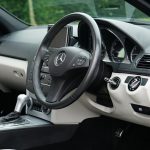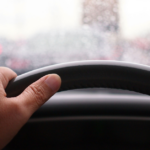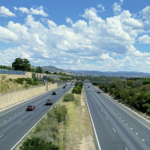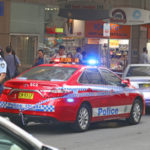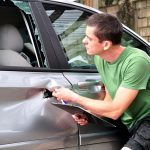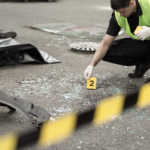The Offence of Furious Driving in New South Wales
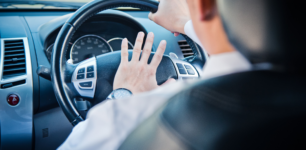
A man has been charged with a string of traffic offences after a head-on collision with a police vehicle south of Sydney.
According to police, at around 1.10am on Saturday, 31 December 2022, highway patrol officers were conducting stationary random breath tests on the Princes Highway in Figtree, an inner western suburb of Wollongong, when a black Audi sedan crossed double unbroken lines before travelling north, allegedly in an attempt to avoid being breath tested.
Officers commenced a pursuit and, as their vehicle approached the crest of a hill on Springfield Avenue, the Audi allegedly collided with the front of their car while driving on the wrong side of the road at excessive speed.
It is alleged the Audi also hit an unoccupied police car that was parked nearby.
The senior constable who was driving the first vehicle and an observing sergeant who was in the passenger seat were treated by paramedics at the scene, before being conveyed to Wollongong Hospital where the sergeant had surgery performed on his injured right hand.
The 46-year old alleged driver of the Audi, who is said to have been disqualified from driving at the time, is alleged to have exited his vehicle and fled from the scene.
He was arrested a short time later on Greenfield Avenue, before being taken to hospital for treatment, as well as mandatory drug and alcohol testing.
He was discharged on New Year’s Day before being formally placed under arrest and taken to Wollongong Police Station, where he was charged with:
- Causing bodily harm due to furious driving or misconduct while in charge of a motor vehicle,
- Dangerous driving occasioning grievous bodily harm,
- Driving whilst disqualified,
- Negligent driving occasioning grievous bodily harm,
- Failing to stop and assist after an impact causing grievous bodily,
- Failing to stop and assist after an impact causing injury, and
- Not keeping left of a dividing line.
He has been refused bail and will appear in Wollongong Local Court to face the charges.
Police await results of the mandatory testing.
Offences relating to furious driving
Furious driving can amount to an offence under both the Crimes Act 1900 (NSW) and Road Transport Act 2013 (NSW)
Furious driving under the Crimes Act 1900
Section 53 of the Crimes Act 1900 (NSW) makes it an offence punishable by 2 years in prison to cause bodily injury due to certain prescribed driving-related conduct.
To establish the offence, the prosecution must prove beyond reasonable doubt that:
- You in charge of any carriage or other vehicle or on horseback,
- You did or caused bodily harm to be done to another person, and
- You did so by wanton or furious riding, driving, or racing, or by wilful neglect or other misconduct
A ‘vehicle’ includes anything on wheels, tracks or skis, other than one that is used on a railway, tramway or monorail.
Furious driving under the Road Transport Act 2013
Furious driving is also an offence under section 117(2) of the Road Transport Act 2013 (NSW).
To establish the offence, the prosecution must prove beyond reasonable doubt that:
- You drove a motor vehicle, and
- You drove ‘so furiously as to endanger the life or limb of any passenger who might be expected to be on the’ road.
A ‘motor vehicle’ is any vehicle built to be propelled by a motor that forms part of the vehicle.
The following matters are to be taken into account when determining whether the offence has been established:
- The nature, condition and use of the road at the time,
- The amount of traffic on the road at the time, or which might reasonably be expected on the road at that time, and
- Any obstructions or hazards on the road at the time.
The prosecution does not need to prove another person was on the road at the time when determining whether the offence occurred.
The penalties
If it is your first major traffic offence in the past 5 years, the maximum penalties are:
- 9 months in prison,
- A 3 year ‘automatic’ licence disqualification, which the court can reduce to 12 months, and/or
- A fine of $2,200
If it is your second or more major traffic offence in the past 5 years, the maximum penalties are:
- 12 months in prison,
- A 5 year automatic licence disqualification, which the court can reduce to 2 years, and
- A fine of $3,300.
What is a major traffic offence?
Section 4 of the Road Transport Act states that the following are considered as major traffic offences:
- Any offence involving death or bodily harm to another person caused by or arising out of the use of a motor vehicle, including murder, manslaughter, intentionally or recklessly wounding or causing grievous bodily harm (sections 33 and 35 of the Crimes Act), furious driving (section 53) and causing grievous bodily harm (section 54),
- Predatory driving (section 51A), police pursuit (section 51B) and failing to stop and assist after impact causing death or grievous bodily harm (section 52AB),
- Drink driving (section 110 Road Transport Act),
- Drug driving (section 111),
- Combined alcohol and drug driving (section 111A),
- Driving under the influence (section 112),
- Negligent driving occasioning death or grievous bodily harm (section 117(1)),
- Driving furiously, recklessly or at a speed or in a manner dangerous (section 117(2)),
- Menacing driving (section 118),
- Failing to stop to assist after impact causing injury or death (section 146),
- Refusing to submit to a breath analysis (clause 16(1)(b) of Schedule 3),
- Refusing or failing to provide a blood, oral fluid or urine sample (clause 17 of Schedule 3),
- Wilfully introducing amount or altering concentration of alcohol or other drugs (clause 18 of Schedule 3), and
- Aiding, abetting, counselling or procuring the commission of, or being an accessory before the fact to any of the above.
Defences to furious driving charges
If you have been charged with furious driving and are able to raise evidence of a legal defence, the onus then shifts to the prosecution to prove beyond reasonable doubt that the defence does not apply to the circumstances of your case.
If the prosecution is unable to do so, you are entitled to an acquittal; in other words, a verdict of not guilty.
Legal defences to furious driving charges include self-defence, duress and necessity.
Self-defence is where you believed your driving conduct was necessary to defend yourself or another person, or to prevent the unlawful deprivation of your liberty or that of another person, or to protect your property from being taken, destroyed, damaged or interfered with, or to prevent criminal trespass to your land, or to remove a person criminally trespassing, and your actions were a reasonable response to the circumstances as you perceived them at the time.
Duress is where your conduct arose due to an imminent threat made to you or someone close to you, in circumstances where the threat was continuing and serious enough to justify your actions.
Necessity is where you engaged in your actions to avoid serious, irreversible consequences to you or someone you were bound to protect, you honestly and reasonably believed you or the other person were immediate danger and your actions were a reasonable and proportionate response to the danger.
Going to court for a traffic offence?
If you are going to court for a traffic offence, call or email Sydney Criminal Lawyers anytime to arrange a free first consultation with a specialist traffic lawyer who will accurately advise you of your options, the best way forward, and fight for the optimal outcome in your specific situation.

